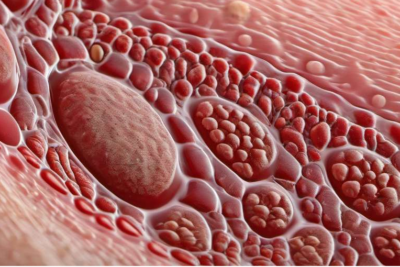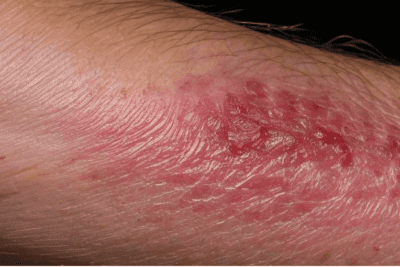
How to cure diabetic ketoacidosis naturally
Diabetic ketoacidosis (DKA) is a potentially life-threatening condition that requires immediate attention, especially for individuals with type 1 diabetes. Understanding how to manage this condition effectively can significantly improve health outcomes. In this article, we will explore various aspects of DKA, including its symptoms, causes, and natural recovery methods.
Recognizing the signs of DKA early can be pivotal in preventing severe complications. Additionally, learning how to cure diabetic ketoacidosis naturally can empower individuals to take control of their health. Let's delve deeper into this important topic.
- What is diabetic ketoacidosis (DKA)?
- What are the signs of diabetic ketoacidosis?
- How can you recognize the warning signs of DKA?
- What causes diabetic ketoacidosis?
- How long does it take to recover from diabetic ketoacidosis?
- What are the treatment options for DKA?
- How to cure diabetic ketoacidosis naturally?
- Questions related to managing diabetic ketoacidosis
What is diabetic ketoacidosis (DKA)?
Diabetic ketoacidosis is a serious metabolic condition that occurs when the body produces high levels of ketones due to insufficient insulin. In people with type 1 diabetes, the absence of insulin prevents glucose from entering cells, causing the body to break down fat for energy instead. This process leads to the accumulation of ketones in the bloodstream, resulting in a dangerous state of acidity.
This condition can escalate quickly and may require hospitalization. Therefore, understanding the underlying mechanisms of DKA is crucial for effective management.
What are the signs of diabetic ketoacidosis?
Recognizing the signs of diabetic ketoacidosis is vital for prompt treatment. Common symptoms include:
- Frequent urination
- Extreme thirst
- Nausea and vomiting
- Abdominal pain
- Shortness of breath
If you notice any of these symptoms, it is essential to check your blood sugar and ketone levels immediately. Early intervention can prevent serious health risks.
How can you recognize the warning signs of DKA?
Warning signs of DKA often develop gradually, but they can also appear suddenly. You should be aware of changes in your body that may indicate a shift towards DKA. Key indicators include:
- Increased fatigue or weakness
- Confusion or difficulty concentrating
- Fruity-smelling breath
- Dry skin and mouth
Maintaining regular monitoring of blood glucose and ketones can enhance your ability to identify these warning signs early. This proactive approach is essential for those managing diabetes at home.
What causes diabetic ketoacidosis?
Several factors can trigger diabetic ketoacidosis, including:
- Inadequate insulin therapy
- Infections or illnesses
- Stress or trauma
- Inadequate food intake
Understanding these triggers can help individuals with diabetes make informed choices to prevent DKA. For instance, ensuring adequate insulin levels and managing stress can significantly reduce the risk.
How long does it take to recover from diabetic ketoacidosis?
The recovery time from diabetic ketoacidosis can vary depending on the severity of the condition and the effectiveness of treatment. Generally, with prompt medical intervention, individuals may start to feel better within a few hours. However, full recovery can take anywhere from a day to a few days.
It’s essential to follow your healthcare provider's recommendations during recovery, including proper hydration and monitoring of blood sugar levels.
What are the treatment options for DKA?
Treatment for diabetic ketoacidosis typically requires immediate medical attention and may include:
- Intravenous (IV) fluids to rehydrate the body
- Insulin therapy to lower blood glucose levels
- Electrolyte replacement to restore balance
- Close monitoring of vital signs and lab values
These treatments are crucial for stabilizing the condition and preventing complications such as coma or death. If you or someone you know is experiencing DKA, seek emergency care as soon as possible.
How to cure diabetic ketoacidosis naturally?
While medical treatment is essential for managing diabetic ketoacidosis, there are also natural strategies that can support recovery. Here are some approaches to consider:
- Stay hydrated: Drinking plenty of water helps flush out toxins and supports kidney function.
- Monitor your blood sugar: Keeping track of glucose levels can help you make timely adjustments to your insulin regimen.
- Incorporate anti-inflammatory foods: Foods rich in omega-3 fatty acids and antioxidants can aid recovery.
- Manage stress: Practicing relaxation techniques such as meditation or yoga can help lower stress levels, which is beneficial for overall health.
These natural remedies for diabetic ketoacidosis recovery can complement traditional treatment, but they should not replace medical advice. Always consult with your healthcare provider before making significant changes to your management plan.
How can I fix diabetic ketoacidosis at home?
While it's crucial to seek professional medical help for diabetic ketoacidosis, there are some actions you can take at home to aid recovery:
- Ensure adequate hydration by drinking water or electrolyte solutions.
- Monitor your blood sugar levels frequently.
- Adjust your insulin dosage only as advised by a medical professional.
Remember, these steps are not substitutes for emergency care but can support your overall management while waiting for help.
What is the first thing to do for diabetic ketoacidosis?
The first critical step in managing diabetic ketoacidosis is to seek immediate medical assistance. Time is of the essence, and interventions like IV fluids and insulin therapy are essential.
Additionally, if you suspect DKA, check your blood sugar and ketone levels right away. This information will be crucial for healthcare providers in determining the appropriate treatment.
What kills in diabetic ketoacidosis?
Diabetic ketoacidosis can lead to severe complications if left untreated. Some of the most dangerous include:
- Severe dehydration
- Electrolyte imbalances
- Coma
- Death
Understanding these risks underscores the importance of recognizing symptoms early and seeking prompt medical care.
How do you get your body out of ketoacidosis?
To resolve ketoacidosis, the primary treatment involves administering insulin, which helps lower blood sugar levels and reduces ketone production. Additionally, rehydration through IV fluids is essential to correct dehydration and restore electrolyte balance.
Once hospitalized, continuous monitoring will allow healthcare providers to adjust treatment as needed and ensure safe recovery.
In conclusion, understanding how to cure diabetic ketoacidosis naturally and recognizing its symptoms early can significantly improve health outcomes. By incorporating both medical treatment and natural remedies, individuals can better manage their condition and lead healthier lives.










